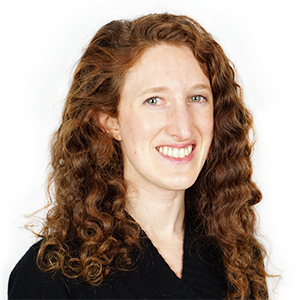You have /5 articles left.
Sign up for a free account or log in.

deberarr/iStock/Getty Images Plus
The Excelsior Scholarship program, which covers tuition for low- and middle-income students at public colleges and universities in New York State, mostly serves middle-income students and fails to reach most City University of New York students who disproportionately come from low-income backgrounds, according to a new report by the Urban Institute, a research organization focused on equity and social mobility.
State policy makers praised the program when it was founded in 2017 as a groundbreaking model for other states, even as similar free tuition initiatives, known as promise programs, proliferated across the country. It was the first statewide program to cover tuition not only at community colleges but also four-year universities.
The program also drew criticism early on from some higher ed leaders because it targeted middle-income students. The program covers the remainder of tuition not covered by need-based federal or state financial aid for students attending State University of New York or City University of New York campuses and whose family household income does not exceed $125,000.
The report describes Excelsior as saddling students with “extra paperwork” and imposing stringent requirements that can prevent low-income students from accessing the aid.
“As policymakers nationwide consider alternative models of free college, New York’s experience with Excelsior highlights a broader tension: how much fine print is too much when it comes to free college?” the report asks.
Students are required to enroll full-time and complete 30 course credits each year toward their degrees to qualify for the scholarship. They’re also required to live and work exclusively in New York for the same number of years they received the scholarships, and if they move, the grants convert into no-interest loans that must be paid back. For example, if a student received scholarships for four years, but left New York three years later, that student owes the state one-fourth of the grant money.
The report found that about 57 percent of first-year Excelsior recipients in fall 2018 had a household income of $70,000 or higher, which is slightly above New York City’s median income of $67,046, according to U.S. Census Bureau data. Roughly 68 percent of scholarship dollars went to students at or above that income level.
Morley Winograd, president of the Campaign for Free College Tuition, which advocates for free college programs, said these results are unsurprising given that Excelsior was intended to focus on middle-class families.
“The fact that people with incomes at or above $70,000 are the principal recipients means the program is working,” he said. “It’s not a flaw. It’s a part of the design.”
However, he also views Excelsior as an example of “how not to do it” when it comes to designing promise programs. He agreed the process to obtain the award is too complicated, and the requirement that graduates remain in New York or pay back the money is an especially “unpopular provision” and major barrier for students.
CJ Libassi, co-author of the report and a doctoral student at Columbia’s Teachers College, noted that while the scholarship’s requirements are intended to encourage students to stay enrolled, graduate and bolster the local labor market, students having the money they need to pay for college is also key to persistence.
“To the extent that these rules that are intended to have incentive effects on students prevent students from getting money in the first place … once you do the final calculus, that might end up having detrimental effects on students’ enrollment and progression,” he said.
Most CUNY students did not benefit from the scholarship in the initial year of the program. Only 5 percent of first-time, first-year undergraduates in fall 2018 received Excelsior grants, while 72 percent received the Pell Grant, federal financial aid for low-income students, and 57 percent received state Tuition Assistance Program funds.
Meanwhile, a quarter of students eligible for the awards actually received them, and the percentages of recipients among eligible community college students and students of color were even lower. Only 8 percent of eligible community college students received an award, and eligible Black and Latino students were about 10 percentage points less likely to receive the scholarship relative to their peers. These students were also less likely to renew the scholarship for a second year.
Eli Dvorkin, editorial and policy director at the Center for an Urban Future, a think tank focused on economic mobility in New York City, said the program neglects the students who need it most. He said state policy makers might believe low-income students have all their needs met by federal and state aid, but, he noted, those students struggle with nontution costs and need more funding.
“While it is admirable that New York State is attempting to make a college education more affordable for a broad range of New York families, in particular a larger number of middle-class families, the reality is these dollars are doing little to make a degree attainable for our city and state’s lowest-income college students,” he said. “And that’s a huge problem, because those are the students who face the steepest barriers to earning a college credential in the first place. New York really needs to focus on getting additional dollars out to low-income students that can be used to pay for the nontuition costs of a college education—the technology costs and books and childcare and transportation costs—all of which have a huge impact on derailing students from the path to a degree.”
Libassi noted that the application and enrollment requirements might pose an obstacle to students and they might fear their grants could be converted into loans. He believes it could make Excelsior less desirable to them.
“I think there’s this looming question of how much of it is about barriers, how much of it is about students who want the aid but just find it too hard to navigate the process … It’s clear that’s part of the story,” he said. “But then there’s also this question of whether students want this enough.”
Judith Scott-Clayton, co-author of the report and a professor of economics and education at Teachers College, believes the main lesson state policy makers designing promise programs can take away from Excelsior’s first five years is not to make these programs too complex.
“I would hope that they would really think carefully about the consequences of being too fancy, being a little too persnickety, with their eligibility requirements,” she said. “Because not only does it create the potential for low take-up and confusion and complexity for students, it also creates a lot of administrative challenges for those who are in charge of implementing all of these rules.”
She added that one of the motivations behind the free college movement was “this idea that financial aid had gotten too complicated and nobody knew what they were going to have to pay … If you add too many asterisks and too much fine print, I think it will start to undermine the power of the free college message,” she said.





